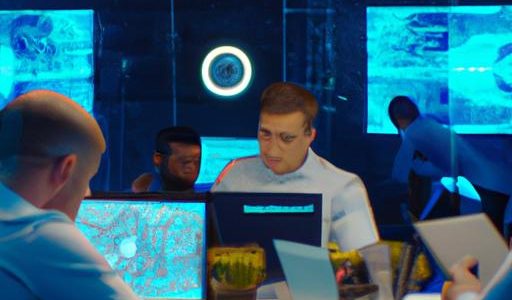Introduction
In today’s digital landscape, the need for secure remote access solutions has never been more critical. With the rise of remote work and the increasing reliance on cloud-based systems, organizations must prioritize the security of their data and networks. But what exactly are secure remote access solutions, and why are they essential in today’s business environment?
The concept of secure remote access solutions revolves around enabling employees to access company resources, applications, and data from outside the traditional office setting securely. This technology provides a secure pathway for remote workers to connect to the company network, ensuring that sensitive information remains protected from potential cyber threats. As businesses continue to adapt to the evolving work landscape, implementing robust secure remote access solutions is key to maintaining operational efficiency and safeguarding valuable data.
Considerations for Choosing Secure Remote Access Solutions
Scalability
When selecting secure remote access solutions for your organization, one crucial consideration is scalability. As your business grows and evolves, your remote access requirements may change. It’s essential to choose a solution that can adapt to your expanding needs without compromising security or performance. Scalability ensures that your remote access solution can accommodate an increasing number of users and devices without causing disruptions to your operations.
User Authentication
User authentication is a fundamental aspect of secure remote access solutions. Implementing strong authentication measures, such as multi-factor authentication (MFA), helps verify the identity of users accessing your network remotely. By requiring users to provide multiple forms of verification, such as passwords, security tokens, or biometric data, you add an extra layer of security to prevent unauthorized access. Choosing a remote access solution that offers robust user authentication capabilities is essential for safeguarding your sensitive data.
Encryption Standards
Encryption plays a vital role in securing data transmitted between remote users and your corporate network. When evaluating secure remote access solutions, consider the encryption standards they employ to protect data in transit. Look for solutions that use strong encryption protocols, such as Advanced Encryption Standard (AES), to ensure that data remains confidential and secure during transmission. Robust encryption standards help mitigate the risk of data breaches and unauthorized access, providing peace of mind for both your organization and remote employees.
Best Practices for Implementing Secure Remote Access Solutions
Regular Software Updates
Regular software updates are crucial for maintaining the security of your remote access solutions. Software vendors frequently release patches and updates to address security vulnerabilities and enhance system performance. By ensuring that your software is up to date, you can protect your network from potential cyber threats and minimize the risk of security breaches.
Two-Factor Authentication
Implementing two-factor authentication adds an extra layer of security to your remote access solutions. This method requires users to provide two forms of identification before gaining access to the network, such as a password and a unique code sent to their mobile device. By requiring multiple authentication factors, you can significantly reduce the risk of unauthorized access and enhance the overall security of your remote access system.
Employee Training
Proper employee training is essential for the successful implementation of secure remote access solutions. Educating your staff on best practices for remote access, such as creating strong passwords, identifying phishing attempts, and recognizing potential security threats, can help prevent security incidents and ensure that your network remains secure. Investing in comprehensive training programs can empower your employees to make informed decisions and contribute to a culture of cybersecurity awareness within your organization.
Considerations for Choosing Secure Remote Access Solutions
When selecting secure remote access solutions for your organization, several essential considerations can guide you in making the right choice.
Scalability
Ensuring that the chosen solution can scale with the growth of your business is crucial. As your workforce expands and your needs evolve, the remote access solution should be able to accommodate increased users and data transmission without compromising security.
User Authentication
Implementing robust user authentication measures is paramount to prevent unauthorized access to your network. Utilizing multi-factor authentication and strong password policies can add an extra layer of security and ensure that only authorized personnel can access sensitive information.
Encryption Standards
Choosing a solution that employs strong encryption standards is vital in safeguarding data in transit. Look for protocols like AES (Advanced Encryption Standard) and TLS (Transport Layer Security) to ensure that data exchanged between remote users and the network is encrypted and protected from potential cyber threats.
